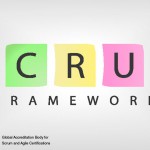The purpose of the Quality aspect is to define quality as it relates to projects and to present the
Scrum approach to achieve the required levels of quality.
Quality, as defined in the Scrum Body of Knowledge (SBOKTM), is applicable to the following:
• Portfolios, programs, and/or projects in any industry
• Products, services, or any other results to be delivered to stakeholders
• Projects of any size or complexity
The term “product” in this Body of Knowledge may refer to a product, service, or other
deliverable. Scrum can be applied effectively to any project in any industry—from small projects
or teams with as few as six team members to large, complex projects with up to several
hundred team members.
It has the following sections:
Roles Guide — This section provides guidance on which sections are relevant for each Scrum
role: Product Owner, Scrum Master, and Scrum Team.
Quality Defined— This section provides the Scrum definition of quality, with a clear distinction
from scope, and describes the relationship between quality and business value.
Acceptance Criteria and the Prioritized Product Backlog —This section emphasizes the
importance of Acceptance Criteria, the Prioritized Product Backlog, and their relationship. It also
explains the Scrum definition of Done.
Quality Management in Scrum—This section provides details on quality planning, quality
control, and quality assurance in the context of Scrum.
Summary of Responsibilities—This section describes the responsibilities relevant to quality
for each person or role on a project.
Scrum vs. Traditional Project Management—This section highlights the benefits of quality
management in Scrum method over traditional project management models.






